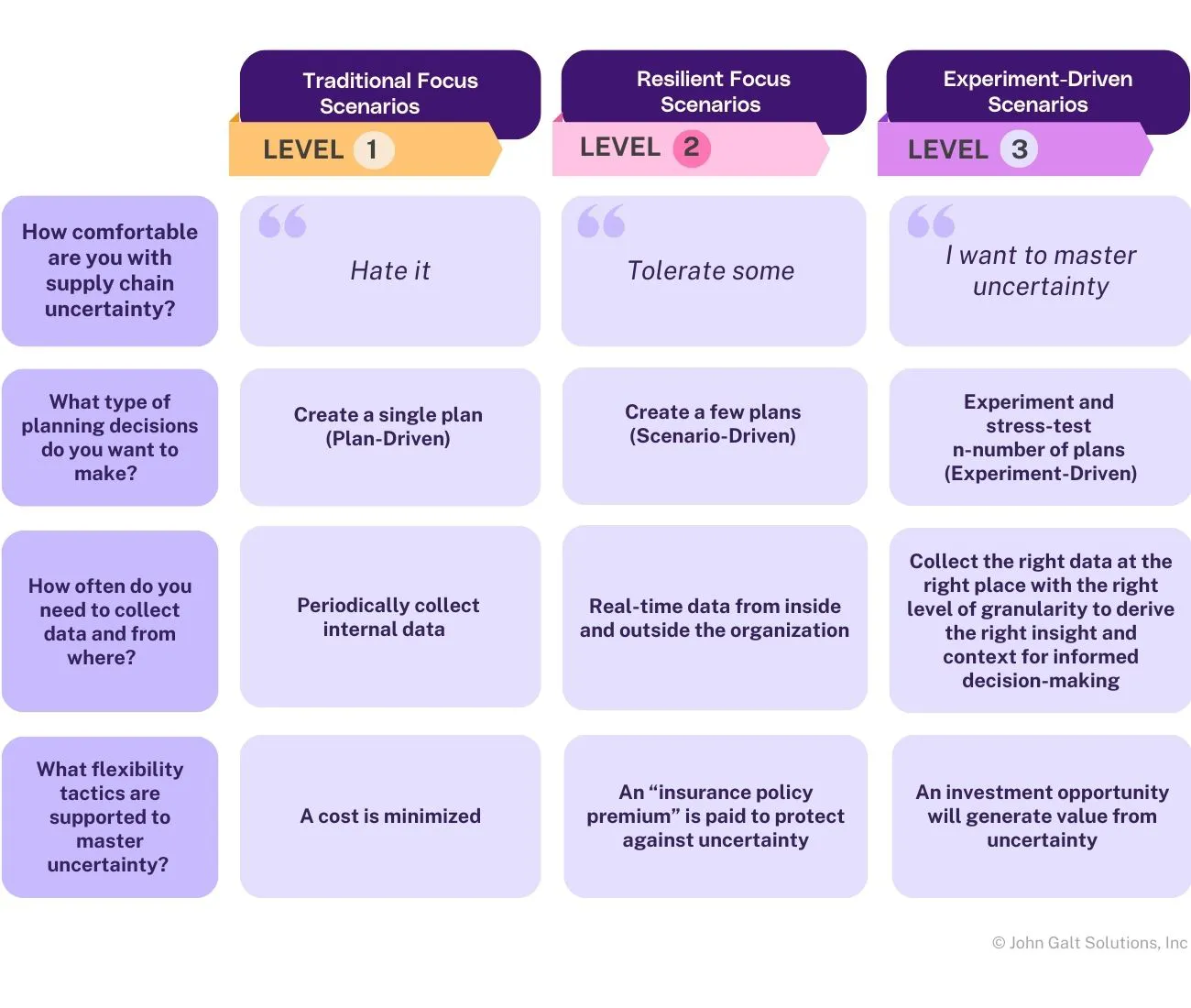The recent global IT outage caused by a software update resulted in widespread disruptions affecting more than 10,000 flights, healthcare services, banks, businesses, broadcasters, and many more. The ripple effects of this event were felt far beyond the initial point of failure, reminding us about the interconnectedness of companies and diverse sectors, the knock-on effects of overlapping crises, and the importance of building antifragility.
In an era of complex global supply chain networks, the fallout from disruptions can be far-reaching, underscoring the need for organizations to prioritize agility and flexibility in their systems to navigate adversity with confidence. One way to do this is by embracing antifragility – the concept of deriving value from uncertainty, as opposed to merely weathering it.
The idea of antifragility was first formulated by Nassim Nicholas Taleb in his 2012 bestseller, Antifragile: Things That Gain From Disorder. In supply chain, antifragility entails embracing uncertainty and continuously learning, evolving, and adapting capabilities and planning strategies to thrive and succeed amid adversity.
Take Burger King's "Traffic Jam Whopper" initiative as an example. Back in 2019, the fast-food chain transformed Mexico City's notorious traffic congestion, among the worst in the world, into a business opportunity by delivering food directly to customers stuck in traffic. Beyond the opportunity to create a truly clever ad campaign, using real-time IoT data, Burger King detected potential buyers in traffic jams and offered them a Whopper on the move. This campaign boosted delivery orders by 63% in the first week and led to a 44-fold surge in Burger King app downloads.
This story illustrates how businesses can turn challenges into opportunities leveraging technology. By sensing when there are traffic jams, linking their business model with real-time IoT data, and deploying drivers to meet customers' needs, Burger King was able to capitalize on uncertainty and create value out of what could be considered most people’s nightmares! Who likes traffic!?
Embracing the chaos of uncertainty, and transforming it into opportunity and value, is a key element of antifragility. Instead of viewing challenges as obstacles to be overcome, companies should look at them as opportunities for growth. This requires a shift in mindset from simply weathering disruptions to actively seeking to profit from them.
To invest in antifragility, companies must adopt a more proactive approach to uncertainty. Rather than blindly chasing redundancy or spreading risk evenly across their operations, they must focus on high-impact areas where the returns will be greatest. This requires a deep understanding of their business and its dependencies, as well as the ability to identify and prioritize opportunities for growth. Companies must also be willing to take calculated risks and invest in new technologies, processes, and strategies that can help them thrive in an uncertain environment.
A key step for supply chains as they take this proactive approach to thrive in an uncertain environment is to make the most of advanced scenario planning to identify weak links, make better decisions, and implement measures to mitigate risk, build agility, and gain a competitive edge. This requires a mindset shift from fear and risk avoidance to embracing chaos and uncertainty as opportunities for growth and innovation.
Not All Scenarios Are Created Equal
To truly build antifragility in supply chains, it is crucial to leverage advanced digital scenario planning. There are three levels of scenario planning, each progressively enhancing an organization's ability to navigate and capitalize on uncertainty.
Level 1: Traditional What-If Scenarios
Does uncertainty make you uneasy?
Traditional scenario planning involves simple what-if scenarios driven by plans. Companies operating at this level typically use basic internal data to create scenarios within a limited range. These scenarios help in understanding potential outcomes based on minor variations to a single data point in existing plans, providing a starting point for more detailed analysis.
Level 2: Resiliency-Focused Scenarios
Do you tolerate uncertainty through resiliency-focused practices?
The second level elevates the approach by focusing on resiliency. Companies at this stage use more complex scenarios that incorporate advanced trade-offs involving financial considerations and capacity assessments. This level allows businesses to evaluate the potential impacts of various disruptions more comprehensively, preparing them to maintain operations under adverse conditions.
Level 3: Experiment-Driven Scenarios
Do you embrace uncertainty and seek to capitalize on it?
At the highest level, scenario planning becomes experiment-driven, enabling companies to achieve antifragility. This approach leverages artificial intelligence (AI) and advanced analytics to create robust scenarios that embrace and capitalize on uncertainty. Companies can explore and experiment with alternate paths, inventory targets, sourcing policies, and more. By integrating vast amounts of data from both internal and external sources, these scenarios provide a probabilistic range of outcomes and their potential impacts. This provides the ability to develop agile plans that succeed across a spectrum of likely scenarios, transforming uncertainty into a strategic advantage.
At Level 3, companies can perform look-back analyses to identify leading indicators and shifts between scenarios, allowing for more dynamic responses to changes.

Transform Uncertainty into Opportunity
Embracing uncertainty is not just about surviving disruptions, but about creating opportunities out of chaos. Adopting an antifragile approach and leveraging scenario planning enables businesses to drive innovation and growth while building a competitive advantage and reducing risk.
We help companies like yours advance your strategies from wherever you are, guiding you through different planning capabilities and levels of scenario planning. We assist you in moving from basic reactive measures to a proactive, opportunity-focused mindset. By investing in advanced scenario planning, you can build supply chain antifragility and transform uncertainty from a potential threat into a powerful driver of innovation and success.
Let us show you how the Atlas Planning Platform can help you transform uncertainty into a competitive advantage, and build your journey to antifragility, navigate the complexities of today and ensure your business thrives in an ever-changing environment.




